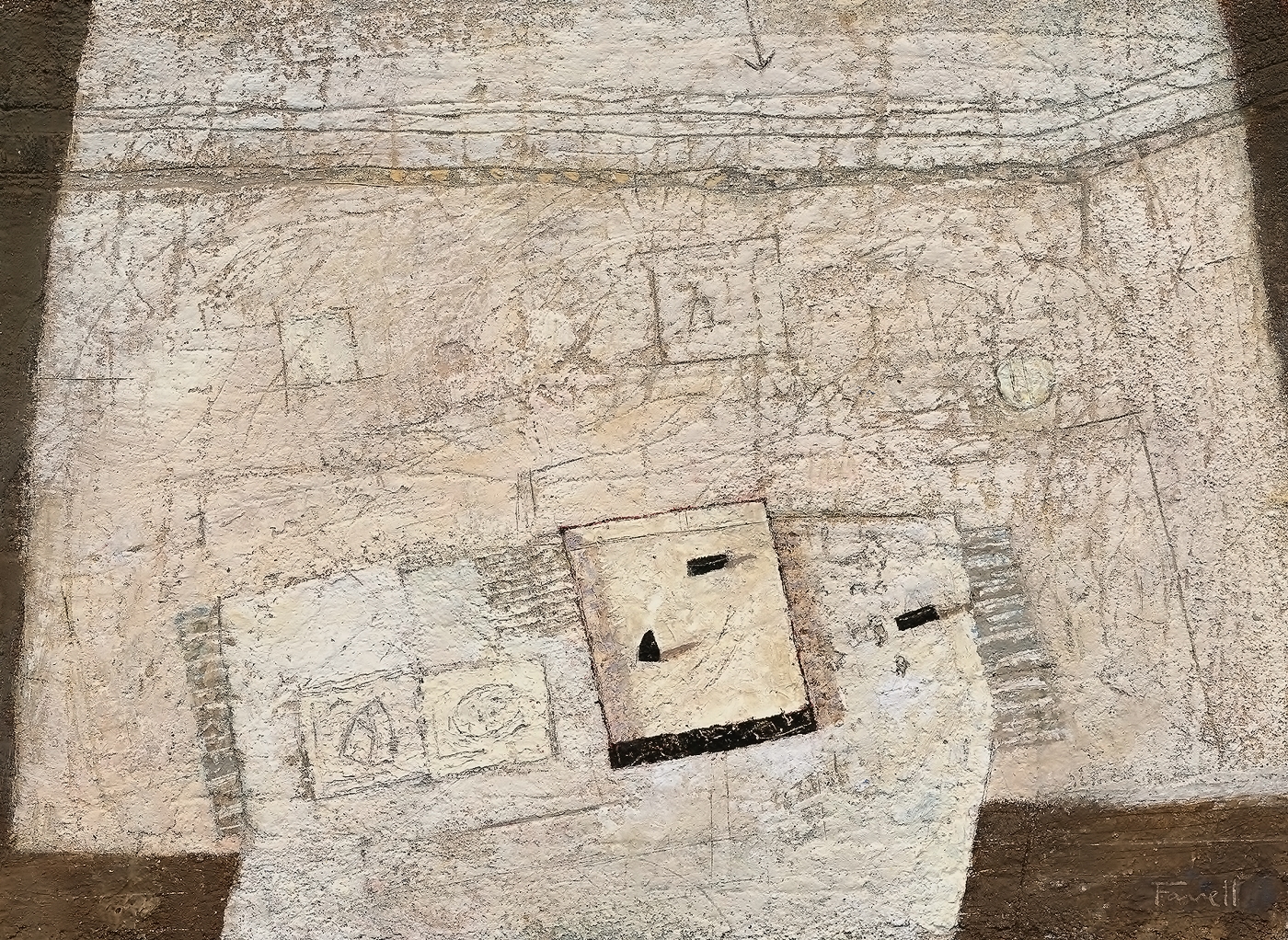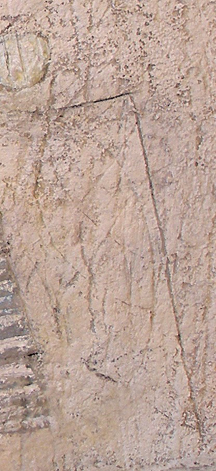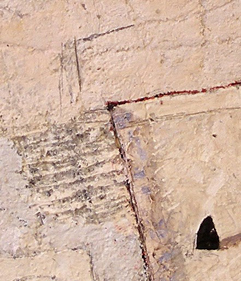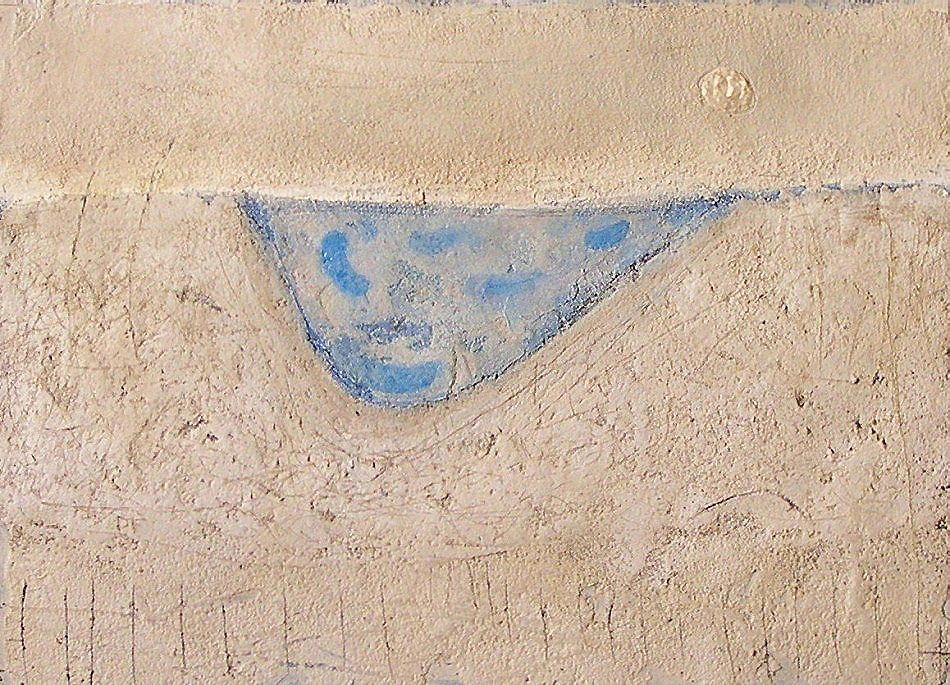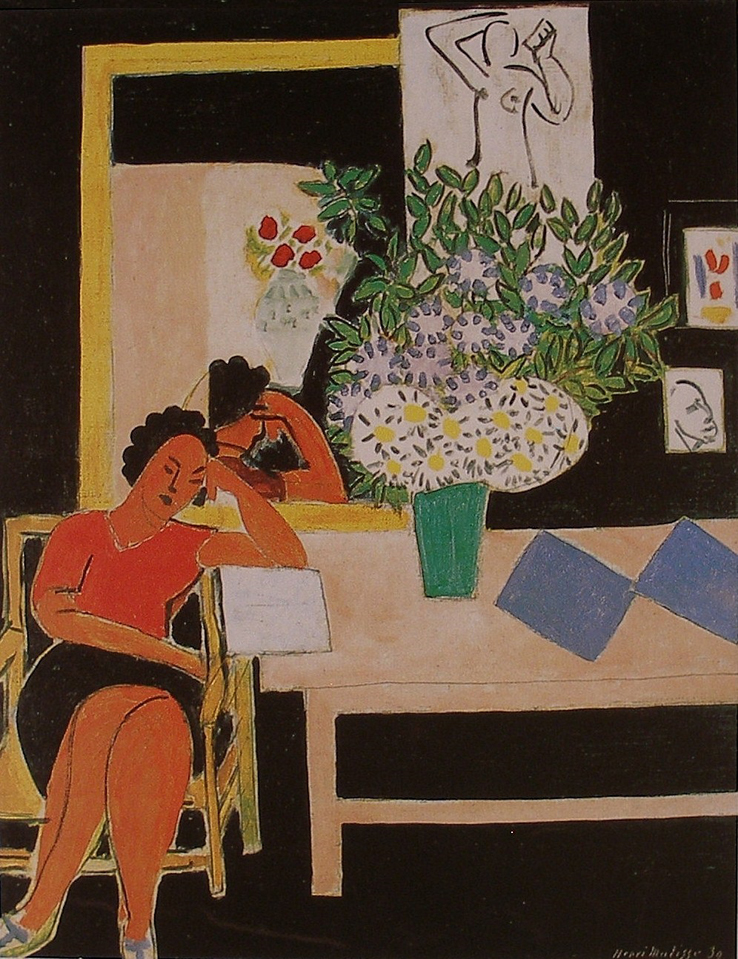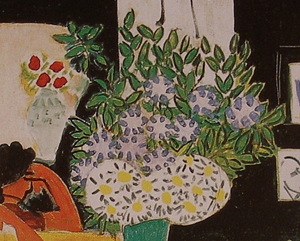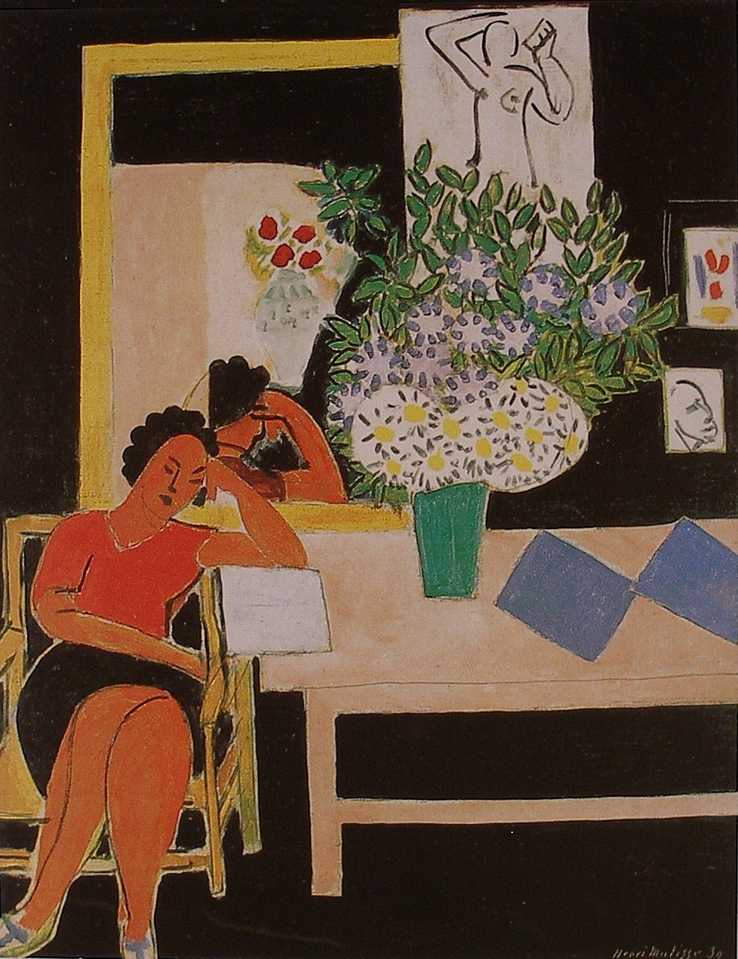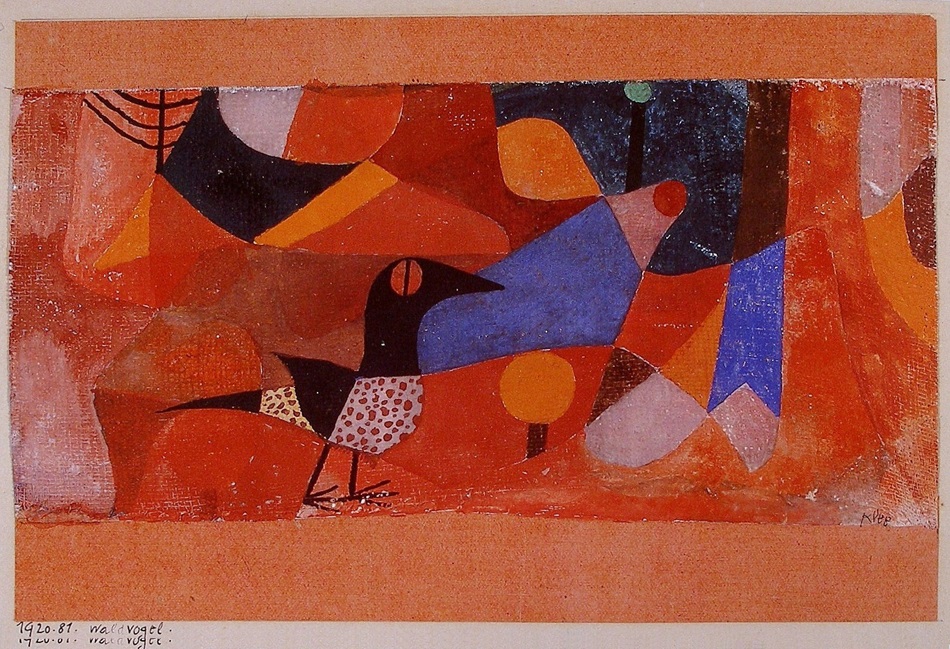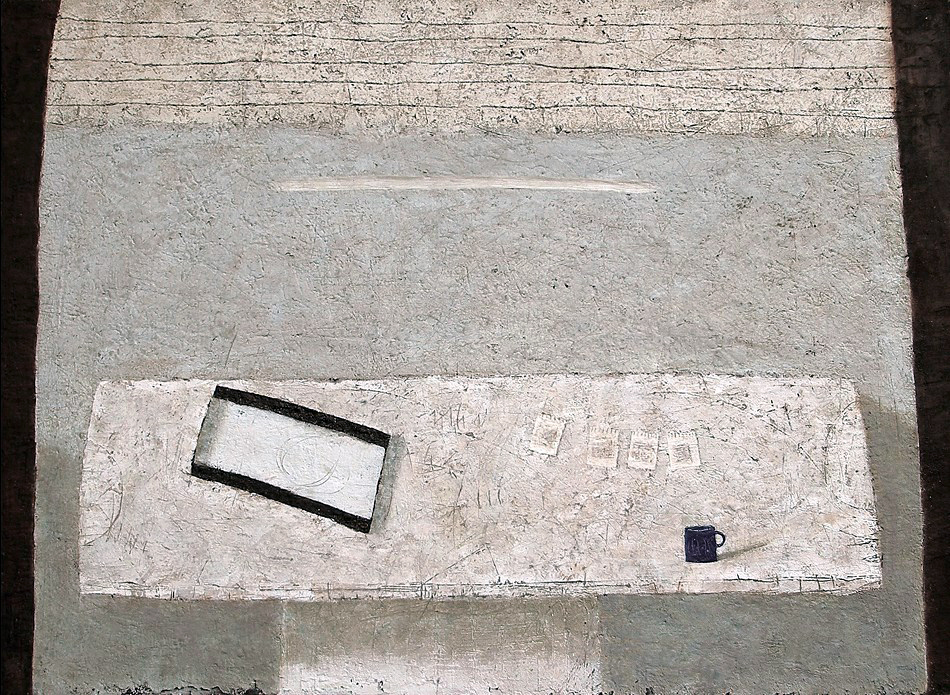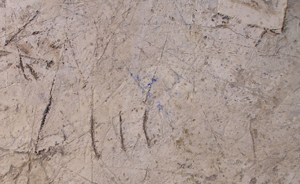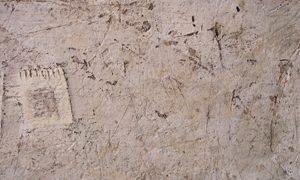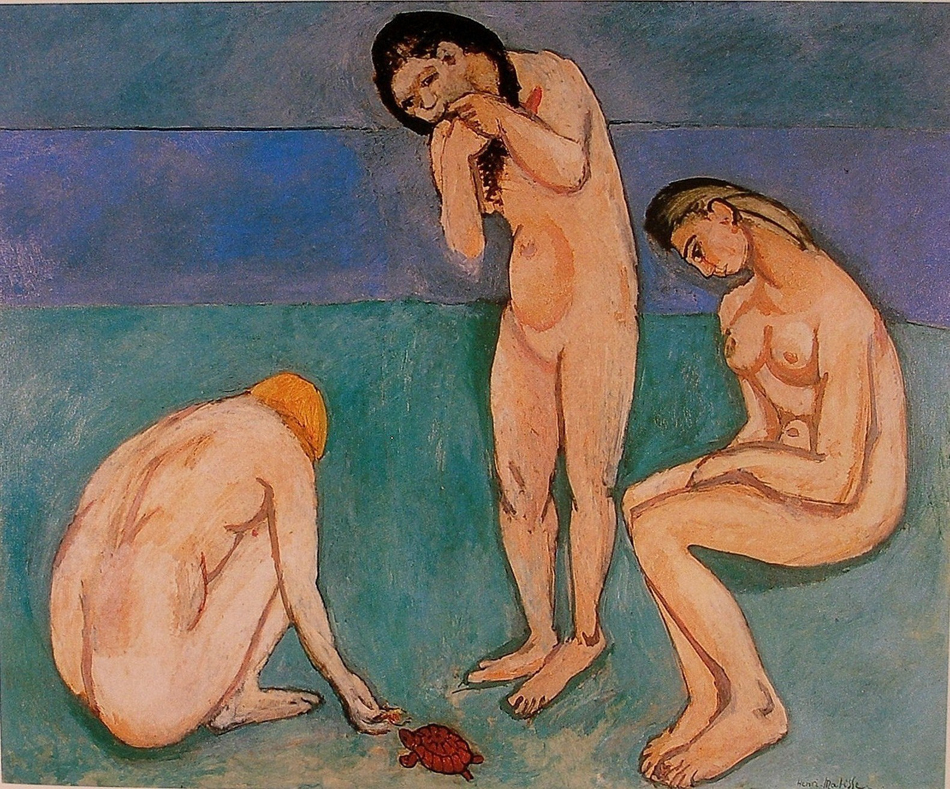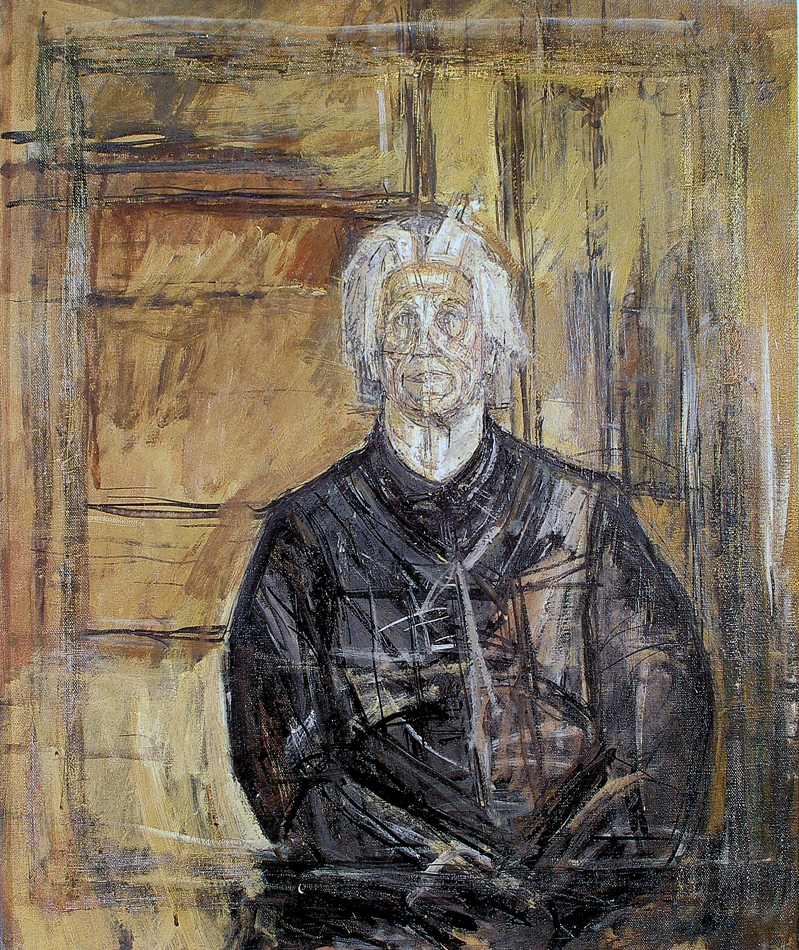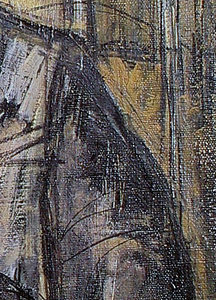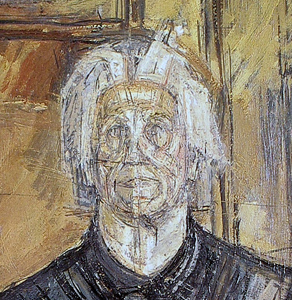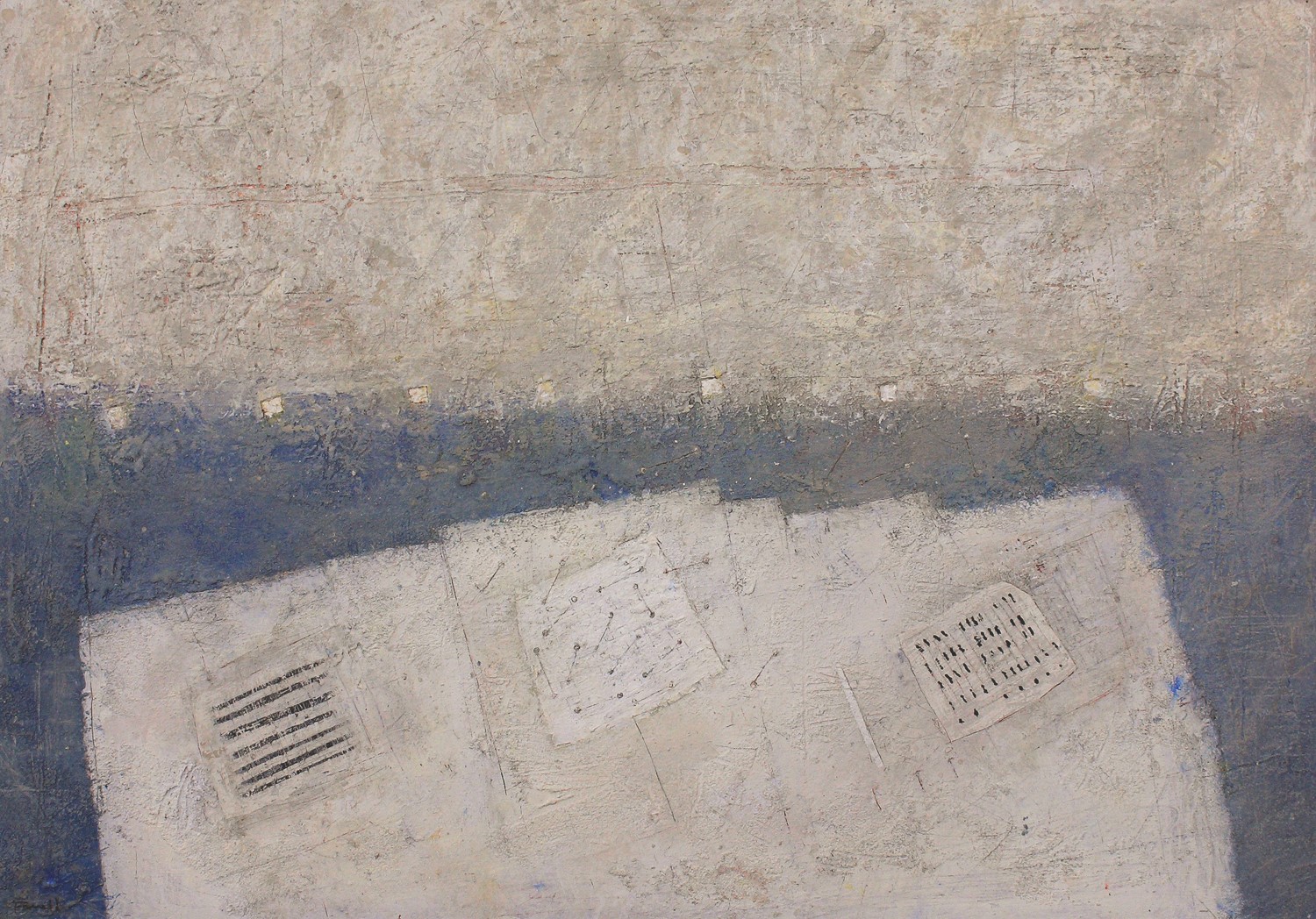
Seven Markers – 19¼ x 27⅝ in (49 x 70.3 cm) – mixed on paper
This recent painting is a great example of working with shape motifs and spatial planes. I always have them in mind when developing a painting, as they prevent unnecessary or unintended diversions. I am also aware that by restricting myself I may limit my exploring or responding to the multitude of options the painting will offer. This is the wonderful dance that never becomes routine and the shape motifs usually win out.
In this painting the rectangle motif is primary and their arrangement almost immediately conveys the sense of a still life. I then create the sense of space by introducing spacial planes with the irregularity along the top of the table, providing the feeling of coming forward and receding. The table top has also been raised to the picture plane creating the strongest plane. The three squares on the table are open to interpretation providing visual movement and focus. The lines on the centre square can be read as being above, creating movement in space, gently leading small squares above.
The seven small squares above the table are in harmony with the squares on the table I also introduced a subtle horizontal above which strengthens the motif and supports the horizontal arrangement of the small squares.
Now to the very important rhythmic markings.
I’ll begin with the square on the right on where the markings have a vertical feel. I integrate this vertical feeling with a white line to the left and a parallel line connecting to the middle square. This introduces a rhythm and provides a relationship including the edges of all three squares.
The horizontal stripes in the left square guide you to the centre square, bringing you to the dancing lines which in turn leads you towards the seven markers.
The process requires many adjustments and revisions and by keeping the shape motifs in mind, prevents me from venturing off to unwarranted directions. It’s the motif that determines the quality of the composition.
Additionally you may have noticed that beautiful cobalt blue mark. An accidental drip which sings.

